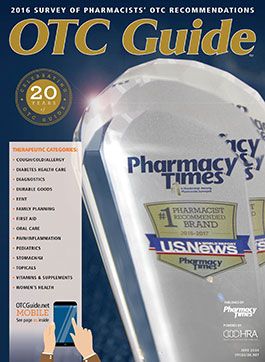OTC Products Are Essential to Our Health Care System
The magnitude of the benefit of OTC medications to the health care system is often underappreciated.
THE SCALE OF CURRENT OTC USE
The magnitude of the benefit of OTC medications to the health care system is often underappreciated. More than 240 million Americans use an OTC medication each year, with an estimated 60 million of those consumers relying solely on OTC medications for access to care and treatment.1 It’s estimated that the widespread use of OTC products saves the system more than $100 billion annually,1 and from the perspective of the vast majority of patients, physicians, and pharmacists, OTC products are safe, effective, and optimal alternatives to many prescription-only products.2 OTC products are an important pillar of our health care system, from a clinical perspective (increased access and availability to medications) and an economic perspective (avoiding unnecessary use of higher levels of care).2
THE FIRST LINE OF CARE
More than 80% of adults seek OTC products as their first response to minor ailments,3 with self-treatment allowing for 24-hour-a-day access to treatment in most cities and neighborhoods, and even in rural areas through multiple retail outlets, such as gas stations. The essence of our “advanced” health care system is often considered to be in the mold of specialists such as oncologists, procedures such as open heart surgery, technology such as magnetic resonance imaging machines, facilities such as level-1 trauma centers, and the latest monoclonal antibody treatments. However, nearly half of the medications consumed by our population comes under the regulatory and practice umbrellas of OTC products, with 2.9 billion annual trips to OTC retailers.
OTC PRODUCTS ARE AN IMPORTANT PART OF YOUR PRACTICE
The important role of pharmacies and pharmacists in treatment unrelated to a prescription is often neglected. Consider that nearly every OTC medication on the market today was once a prescription-only product at some point in its product lifecycle. And, in most cases, these former prescription-only products are perceived as equally safe and effective as their prescription- only cousins and ancestors. Just because a product doesn’t require a prescription, doesn’t mean it isn’t equally important to the system and to the patient!
So it’s remarkable how little attention we pharmacists give toward educating ourselves on the latest trends, clinical findings, and therapeutic options in the OTC space. Pharmacists should view OTC products as a core, not an ancillary, part of their clinical practice and continue to maintain and grow their OTC product acumen. We should maintain OTC medications in our patient medication lists and clinical reviews. We should include these medications in our patient-centered drug use plans. We should keep abreast of literature that speaks to the safe and effective use of OTC products.
With this 20th edition of the OTC Guide, Pharmacy Times is again providing you with survey findings of your peers’ preferred OTC products alongside information and tools you need to make effective and informed OTC recommendations for your patients. Enjoy.
Troy Trygstad, PharmD, PhD, MBA, is vice president of Pharmacy Programs for Community Care of North Carolina (CCNC), which works collaboratively with more than 1800 medical practices to serve more than 1.6 million Medicaid, Medicare, commercially insured, and uninsured patients. He received his PharmD and MBA degrees from Drake University and a PhD in pharmaceutical outcomes and policy from the University of North Carolina.
REFERENCES
- The value of OTC medicine to the United States. Booz & Co; Consumer Healthcare Products Association. Your Health at Hand website. yourhealthathand.org/images/uploads/The_Value_of_OTC_Medicine_to_the_United_ States_BoozCo.pdf. Published January 2012. Accessed May 11, 2016.
- Understanding trust in OTC medicines: consumer and healthcare provider perspectives. Consumer Healthcare Products Association. Your Health at Hand website. yourhealthathand.org/images/uploads/Understanding_Trust_in_ OTC_Medicines_Research_Findings.pdf. Published March 6, 2012. Accessed May 11, 2016.
- Statistics on OTC use. Consumer Healthcare Products Association website. chpa.org/marketstats.aspx. Accessed May 12, 2016.

